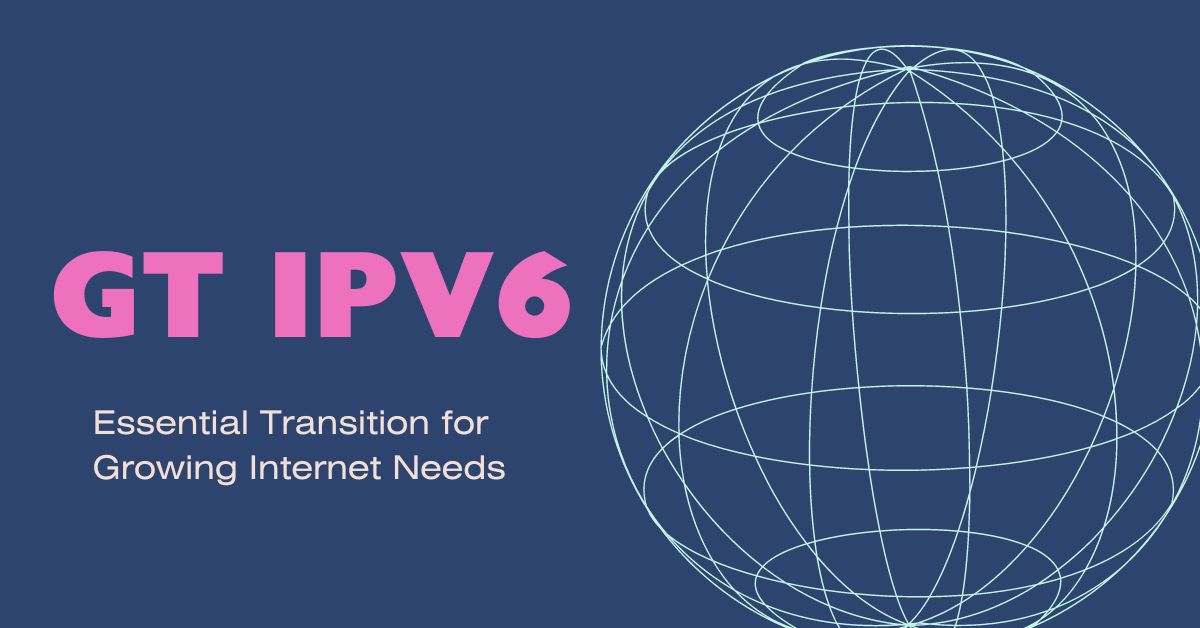The importance of GT IPv6 is growing as internet usage in Guatemala (GT) rises. IPv4, the current protocol, is finding it difficult to keep up with this quick expansion. Making the switch to IPv6 is essential to supporting the country’s growing user and device population. An easy transition to this new technology may be achieved by being aware of what IPv6 is and why it is required for GT.
Understanding IPv6
The most recent iteration of the internet protocol is known as IPv6, or Internet Protocol Version 6. It is a system of regulations that controls data flow throughout the internet. IPv6 employs a 128-bit address as opposed to 32-bit addresses used by IPv4. Due to this distinction, a notably higher number of distinct IP addresses are possible. IPv6 is becoming more and more important as more devices connect to the internet.
The Need for IPv6 in GT
Digital services and internet connectivity are booming in GT. The current IPv4 infrastructure is being taxed by this increase. Because IPv4 can only support a finite amount of addresses, they are running out. A large pool of IP addresses is provided by IPv6, which provides a solution. This means that GT can increase its internet consumption without worrying about running out of addresses.
Benefits of Adopting IPv6
Using IPv6 advantages GT in a number of ways. It offers an almost infinite quantity of IP addresses, to start. Supporting the growing number of internet-connected gadgets requires this. Second, IPv6 increases the dependability and speed of the internet. Better overall performance is anticipated from the new protocol’s ability to handle larger volumes of data more effectively. And last, IPv6 improves security. It has internal characteristics that increase its defence against cyberattacks.
Challenges in Transitioning to IPv6
Although IPv6 has numerous benefits, switching to it is not without its difficulties. Modernising the current infrastructure is one of the largest obstacles. Since IPv4 is the foundation of many of GT’s networks, switching to IPv6 will need new hardware and software. There’s also the requirement for training. IT workers need to become proficient in IPv6 network management and operation. Overcoming these obstacles will take time, money, and effort.
Steps for a Smooth Transition
GT need a well-thought-out plan in order to migrate to IPv6 without incident. Evaluating the current infrastructure and determining what needs to be upgraded is the first step. It is essential to work together with internet service providers (ISPs). ISPs need to be prepared to assist clients with the switch to IPv6. Additionally, public awareness is crucial. Encouraging companies and the public to understand IPv6’s advantages can facilitate the switch.
The Role of the Government
An essential component of the IPv6 transition is the government. IPv6 adoption can be promoted by the government through rules and laws. Businesses may be encouraged to update their networks and make sure public services are prepared for IPv6. For a transition to go smoothly and effectively, government support is necessary.
The Future of GT with IPv6
GT’s prospects with IPv6 appear bright. GT can make sure its digital infrastructure is prepared for future expansion by using this new protocol. This action will strengthen cybersecurity, support the growing number of internet users and devices, and increase internet speed and dependability. Moving to IPv6 is a step towards a more secure and interconnected future, not just a technical advancement.
Conclusion
The internet’s future lies on IPv6, and GT needs to adapt to this development. The advantages of transitioning outweigh the difficulties by a wide margin. Through meticulous planning and collaborative efforts, GT can guarantee a seamless shift to IPv6. By doing this, the nation will be set up for success and progress in the digital era.
FAQs
What is IPv6?
IPv6 is the latest version of the internet protocol, which helps direct traffic on the internet. It uses a 128-bit address, allowing for a much larger number of unique IP addresses compared to IPv4.
Why does GT need IPv6?
GT needs IPv6 to support its growing number of internet users and devices. IPv4 addresses are running out, and IPv6 provides a solution with its vast pool of addresses.
What are the benefits of IPv6?
IPv6 offers a larger address space, better performance, and improved security features. It is designed to handle more data efficiently, leading to a better internet experience.
What challenges does GT face in adopting IPv6?
GT faces challenges such as updating its existing infrastructure and training IT professionals to manage IPv6 networks. These require time, money, and effort to overcome.
How can GT ensure a smooth transition to IPv6?
GT can ensure a smooth transition by assessing current infrastructure, collaborating with ISPs, educating the public, and setting supportive government policies.











